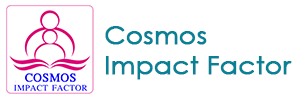
Journal Basic Info
- Impact Factor: 1.809**
- H-Index: 6
- ISSN: 2474-1655
- DOI: 10.25107/2474-1655
Major Scope
- Geriatric Medicine
- Psychiatry and Mental Health
- Epidemiology
- Renal Disease
- Child Birth
- Anesthesiology and Pain Medicine
- Pulmonary Medicine
- Asthma
Abstract
Citation: Ann Clin Case Rep. 2019;4(1):1624.DOI: 10.25107/2474-1655.1624
Raised Blood Glucose Due to Heterogeneous Glucokinase Gene Mutation (MODY 2) Diagnosed for the First Time in Pregnancy: The Dilemmas and Successful Management- Case Report and Review of Literature
Sasirekha Rengaraj, Sutharsika Thiyagalingam, Vimala Kathirvel and Dillikumar
Department of Obstetrics and Gynaecology, Jawaharlal Institute of Postgraduate Medical Education and Research, India
Department of Paediatrics and Neonatology, Jawaharlal Institute of Postgraduate Medical Education and Research, India
*Correspondance to: Sasirekha Rengaraj
PDF Full Text Case Report | Open Access
Abstract:
Hexokinase mutation (MODY-2) is frequently misdiagnosed as either type I or type II diabetes mellitus especially if presented for the first time during pregnancy. Generally MODY affects 1% to 2% of diabetes. The defect in glucose sensing mechanism in MODY-2 results in higher set point for maintenance of glucose homeostasis. Treatment is not recommended outside the pregnancy however in pregnancy fetal abdominal circumference helps to decide about the insulin requirement. We are presenting a case in which MODY 2 was diagnosed for the first time after her first pregnancy, there were controversies around the first pregnancy and the second one was uneventful. Genetic testing is mandatory to establish the diagnosis. In addition to it, implications of MODY and its subtypes along with pattern of inheritance and management aspects have been discussed in detail.
Keywords:
Cite the Article:
Rengaraj S, Thiyagalingam S, Kathirvel V, Dillikumar. Raised Blood Glucose Due to Heterogeneous Glucokinase Gene Mutation (MODY 2) Diagnosed for the First Time in Pregnancy: The Dilemmas and Successful Management- Case Report and Review of Literature. Ann Clin Case Rep. 2019; 4: 1624.













